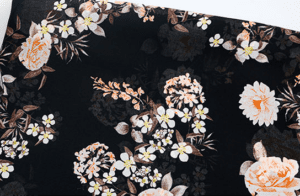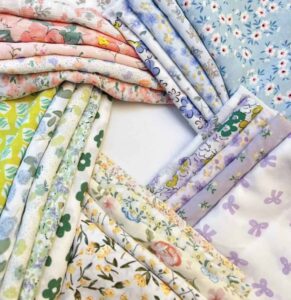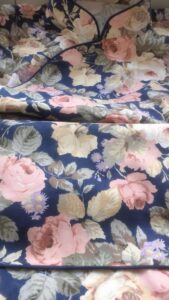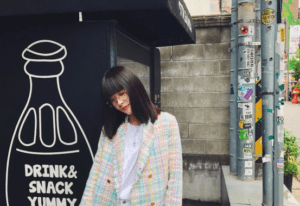With the continuous progress of China’s reform and opening up, China’s society and economy have made rapid progress and various industries have achieved great development.The development. In the clothing design industry, along with the continuous improvement of the living standard of the general public, people are putting forward more and more demands for clothing styles and colour combinations.The more stringent the requirements, the more attention the majority of clothing designers are paying to the design of clothing fabrics and the artistry of clothing design. By incorporating printed The application of dyeing in the design of clothing fabrics can not only make the distinctive personality of the clothing fully displayed, but also give the clothing fabrics a deeper art The technical connotation. Nowadays, clothing fabric design and clothing design have become more and more closely integrated, with a wide range of fabric treatment techniques The effective application of printing and dyeing in the design of clothing fabrics is not only an effective innovation in the design of clothing fabrics, but also in the design of clothing An effective innovation in the way we count.
As a professional book on contemporary textile and garment fabric printing design, the book “Textile and Garment Fabric Printing Design” contains In 6 parts, the first part is about what textile design is and a case study of career planning for textile designers; the second part The third part is about the research work of textile research designers, primary research work, secondary research work case studies; the third part is about The fourth section is about planning the research design brief, identifying the topic, the actual
The fifth section is a case study on observing and analysing the structure, organisation and texture of colour and pattern, and the sixth section is a case study on life drawing techniques, mixed media scale and size. The book is based on concrete practice, with a rich theoretical discussion, accompanied by targeted case studies, including works by design masters and relevant interviews, which are outstandingly inspiring and informative. At the same time, Print Design for Textile and Garment Fabrics: Inspiration and Creativity is a richly illustrated, professional, artistic and practical book that can be used not only as a professional textbook in garment, textile and art universities and vocational and technical colleges, but also for training or self-study by print designers, developers and researchers in textile and garment companies.
Based on a general overview of the book Textile and Garment Fabric Printing: Inspiration and Creativity, printing and dyeing includes both traditional hand printing and modern digital printing. In the case of traditional hand printing and dyeing, the main techniques include tie-dye and batik. Tie-dyeing provides a visual experience that radiates from the centre to the periphery, allowing the dye to enter the fabric to create texture, supported by a range of techniques such as binding and tying. As mentioned in Printed Textile Fabrics: Inspiration and Ideas, the application of tie-dye to rustic textiles can create a hazy visual effect on the fabric. It is worth noting that the visual effect of tie-dyeing in the design of clothing fabrics, whether cotton or linen, is unique and has a very promising future. Batik, as a combination of wax painting and dyeing, involves a combination of cotton batik, silk batik, hand-painting and splattering techniques, using a wax knife to apply wax and make a picture on the fabric with the wax knife, then drying, followed by dipping the fabric in a dye bath and folding the pattern, drying again, further washing in boiling water and drying flat to obtain the batik pattern. The batik patterns are rich, varied and unique, and when made into garments, the fabric gives a simple, unadorned and fresh feel, which can effectively meet the aesthetic needs of modern people. Unlike traditional hand printing and dyeing, modern digital printing and dyeing is achieved through mechanised industry and printing agents, and therefore shows a lack of cultural heritage and artistic transmission. However, it also has many advantages: (1) Modern digital printing and dyeing is highly functional, and the rapid development of modern technology has led to a significant increase in production efficiency and the gradual development of new functions for printed fabrics. The materials used for digital printing and dyeing include not only traditional cotton and linen, but also synthetic fibres (nylon, viscose, etc.), and can be made into blended materials according to the corresponding ratios, thus making printed and dyed fabrics that can meet people’s diverse needs.
In view of the inherent advantages of traditional hand dyeing and modern digital dyeing, the following is a discussion of their specific applications in the design of clothing fabrics. Firstly, the specific application of traditional hand dyeing in the design of clothing fabrics. On the one hand, for the specific application of tie-dye in the design of clothing fabrics, in modern clothing fabric design, tie-dye can be applied to fabrics such as cotton and pure woollen materials, etc. The pattern produced by tie-dye can present a gradual colour effect, and the overall visual effect of the pattern is rich in change and romance, which can bring people a new visual experience. On the other hand, for the specific application of batik in clothing fabric design, batik focuses on the use of wax to draw a variety of different patterns on the fabric, followed by the formation of cracks when the fabric is dyed, due to the relatively fragile structure of the wax, which further forms ice patterns after dyeing. In the design of garment fabrics, fabrics such as velvet and linen can be treated with batik. Secondly, the specific application of modern digital printing and dyeing in the design of clothing fabrics. Digital printing, for example, is a modern and advanced printing technology that not only allows a wide range of colours to be printed, but is also not bound by the number of colour sets. Nowadays, digital printing is being used in the design of more and more well-known brands of clothing, and the fabrics obtained from digital printing generally have excellent drapability. The fabric can be used to meet the needs of a wide audience for fashion.
The art of printing and dyeing is not only a unique skill, but also a form of traditional Chinese culture and art. The process of designing garment fabrics is also a process of artistic design. Applying the art of printing and dyeing to the design of garment fabrics, the artistic treatment of the original garment fabrics on can enrich the texture of the fabrics and make the garment fabrics produce a new visual experience.
























